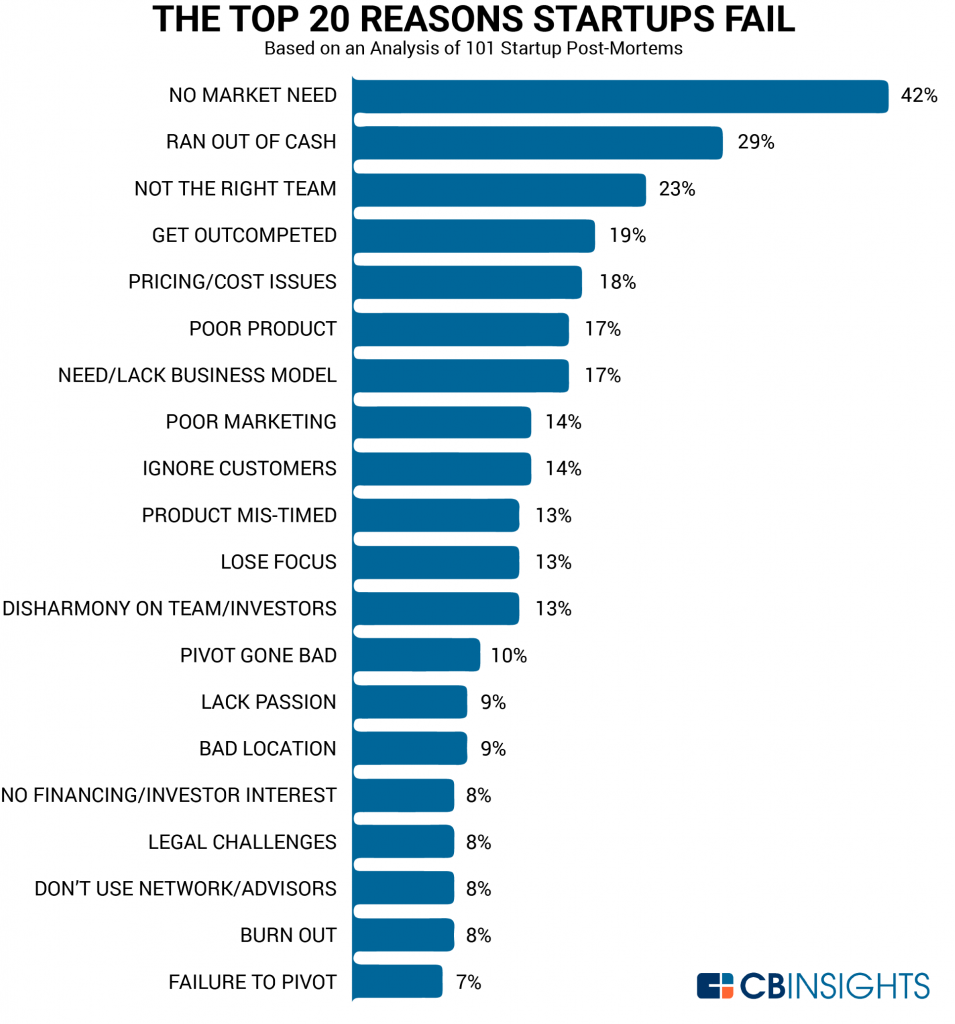 If you’re reading this article, you’ve already avoided making your first mistake as a digital marketer: not planning your first marketing campaign thoroughly. A carefully planned, organized, and well thought-out marketing campaign can generate substantial web traffic and, of course, other benefits, but it requires research and brainstorming.
If you’re reading this article, you’ve already avoided making your first mistake as a digital marketer: not planning your first marketing campaign thoroughly. A carefully planned, organized, and well thought-out marketing campaign can generate substantial web traffic and, of course, other benefits, but it requires research and brainstorming.
You may have the best content in the world but if your strategy doesn’t have clear, measurable goals and a good understanding of the target audience, chances are that your campaign will fail. Since making adjustments after launching the campaign may interfere with success and make completing the campaign more difficult, planning and research from the start is essential for success.
Ninety percent of new companies fail within four months, long before they manage to generate profits. And poor marketing is one of the top 20 reasons why start-ups fail, according to CBInsights research.

Image source: Entrepreneur
To help plan and launch your first marketing campaign and avoid becoming one of those companies, here’s a list of 10 common errors of initial marketing campaigns.
- Lack of Clear Goals
Let’s drive as many visitors to our website as we possibly can, and we’ll achieve maximum exposure. This sounds good, right?
Wrong! Who would you be targeting? Everyone? Targeting everyone is too broad a goal for a new company.
If you don’t have a large workforce – and chances are you don’t – you should have detailed, specific goals that make it possible to measure your success. For example:
- Increase website traffic by 10 percent in three months
- Sell 100 software packages within two months
- Reach a 12 percent conversion rate by the end of March.
Goals like these give clear direction and the ability to measure campaign success. Just remember to be realistic: It’s much better to exceed expectations than to be disappointed.
- Targeting too Much or too Little
Another reason why a marketing campaign might fail quickly is lack of audience targeting. Some businesses target basically everyone who can buy their product. As the result, they have an almost impossible task, and the marketing strategy fails to generate a message that resonates with ideal buyers. You need to target the audience segments most likely to purchase your product or service – and to create messaging that appeals to those segments.
To make targeting easier for businesses, marketing and social media platforms have designed special tools. For example, Facebook Audience Insights and Instagram Insights provide much-needed information on demographics, geography, purchase behavior and other information about audiences.
By using this information, you’ll avoid targeting everyone or limiting marketing to a small group. You’ll know what customer groups to target to maximize marketing results.
- Failing to Harness Your Creativity
Can you remember the last marketing message that really captured your attention? It was likely something really creative, right? People are tired of in-your-face, hard sell-style marketing. Really creative and engaging ads really make a lasting impression because they connect with or charm the targeted audience.
That’s why your first campaign should be as creative as possible. Creativity ensures originality, and since you need to present your brand as unique and special, it’s vitally important for proper branding.
- Not Creating High-Quality Dedicated Landing Pages
A website landing page is a fundamental online marketing tool that captures leads and may turn them into customers. A mediocre landing page that can’t capture attention of visitors, deliver your marketing message, and convince them to convert means a failure of the entire campaign.
It’s important to have more than one landing page. According to HubSpot, businesses with 10 to 15 landing pages increase the number of leads by 55 percent, while those with more than 40 landing pages get 12 times more leads than companies with five or fewer landing pages. A dedicated landing page for a specific content persona or customer group can improve lead generation. To help ensure engaging and error-free copy on landing pages, feel free to use online writing and editing tools such as Grammarly or the Hemingway App.
- Failing to Monitor Your Campaign and Make Adjustments
Online business is not for the impatient. Chances are that your first campaign won’t make your brand as famous as its biggest competitors. To maximize the chances of achieving all your marketing goals, you have to constantly monitor your effort and make appropriate adjustments.
The reason for monitoring is simple: Monitoring marketing campaigns allows you to see what’s working and what’s not. You’ll know where to eliminate problems. Also, you can spot the best-performing methods and invest more in them to ensure maximum results.
- Not Testing the Most Important Elements of Your Campaign
This point reinforces the previous one about monitoring. When you create a number of marketing campaigns, you need to learn which one has the best potential. A good way to achieve that is to test different versions of the campaign content. You can save a large portion of your marketing budget by avoiding spending money on ineffective content.
Note that patience is key when you test a new strategy. It’s better to test one variable at a time since testing multiple strategies can cloud results. Also, pay attention to other factors like time, target audience, etc. For example, when checking your email marketing strategy, sending emails at the same time every day will provide a more informative result.
That’s why A/B testing is popular among businesses, and many marketing platforms and tools provide it. For example, the Facebook Audience Insights tool enables users to test different versions of ads by creating a split test.
- Launching a Campaign without Creating a Cohesive Strategy
Doing so results in a campaign that interferes with your main marketing strategy. Eventually, you’ll dramatically reduce your chances of achieving your goals. Remember: A single campaign is just a part of the overall marketing strategy and contributes to achieving overarching goals.
- Failing to Develop Buyer Personas
If you don’t know your ideal customer, you don’t know who you’re selling to. As the result, you’ll end up targeting everybody, and we’ve already touched on how dangerous that is.
Creating a buyer persona, which describes your ideal customer, helps you understand the behaviors, perceptions, problems, and needs of your target audience. Narrow down your target audience so you can polish your marketing message to make it as appealing as possible to targeted audience segments.
- Treating Social Media Platforms as a Monolith
Each social media platform is unique, so you have to treat them as such. For example, consumers visit Facebook to learn about your company’s activities, get information about its new products, connect with customer service, and explore upcoming events. To get the best out of Facebook, build a decent fan base through entertaining and educational posts, and then share your products, services, offers, updates, and news.
People visit LinkedIn to share their professional experience, connect with others in their industry or professional niche, and get the latest updates and news on persons and companies that interest them. LinkedIn is a great platform for prospecting, building an image of a thought leader, and recruiting. It’s safe to assume that B2B businesses will find LinkedIn more useful than B2C businesses.
Each platform requires different content. Treating them as a monolith is a mistake.
- Not Defining a Clear Call-To-Action (CTA)
A CTA is your best way to encourage your audience to take the first real step to becoming a customer. If the CTA is not clear, you’ll lose an opportunity to capitalize on this powerful piece of your marketing machine. If you have multiple different calls to action on a single landing page, you’ll dilute your results.
To make a clear and personalized CTA and maximize its effectiveness, apply these proven techniques:
- Make it action-oriented to nurture a continued interest in your company/topic.
- Make it stand out. All CTAs should be clearly visible in your content to draw the attention of your audience.
- Consider creating a sense of urgency. Let your audience know that taking an action as soon as possible unlocks benefits like a discount.
- Emphasize benefits for customers. Instead of using traditional calls to action like “download now” and “contact us,” try highlighting that clicking on the CTA will yield specific benefits, e.g. “Get My Industry Report,” “Show Me How to Grow My Business,” and “Sign up for Free Trial.”
Bottom Line: Researching as much as you can before implementing your first campaign can help avoid common mistakes, increase the effectiveness of targeting, and join those 10 percent of new companies that don’t fail within their first few months but go on to become thriving organizations, loved by their customers.
Daniela McVicker is a digital marketer who collaborates with Topwritersreview and other websites. She shares her experience and helps marketers make their name in the online world. Daniela is interested in everything related to SEO and blogging.



